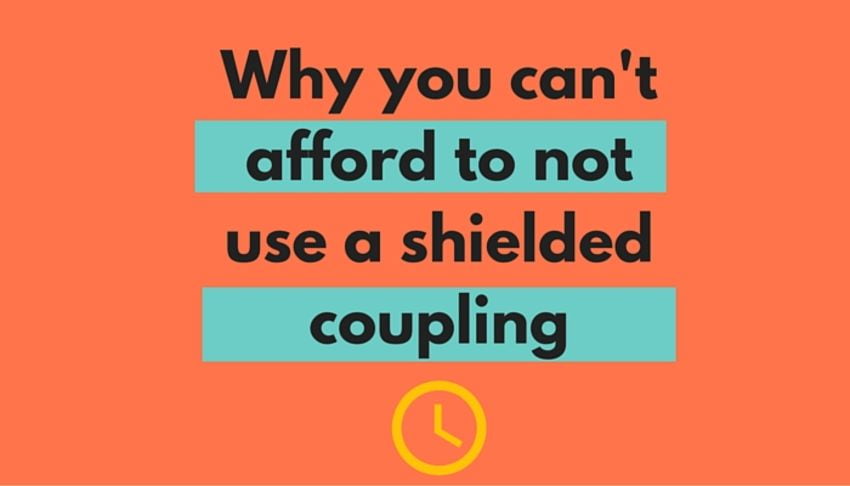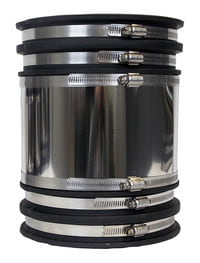
Shielded Couplings: The New Industry Standard
by: Larry Lamphere, Regional Sales Manager
The standard, unshielded coupling for underground applications is a thing of the past. And no, a coupling is not just a coupling.
Compaction, deflection and constant movement of underground infrastructure layers has forced many municipalities and contractors to make the change. Shielded couplings are engineered with a heavy-duty shear ring to handle the tensile stressing and shear forces that the pipeline contacts daily. When municipalities need to maintain pipe alignment, a shielded coupling is the obvious choice.
WHY THE INDUSTRY HAS SWITCHED
The more utilities stack and layer above and below our existing sewer, water and storm pipe, the more our equipment needs to support the surrounding environment to avoid failure. This scenario has created the need for a shielded coupling that can withstand the conflicting additions to the space around the repair.
With more than 19,500 sewer systems nationwide that handle a daily-flow of 50 billion gallons of raw sewage, creating a durable connection is imperative to ensure the pipeline will remain intact. Pipeline failure can result in hazardous consequences for recreation, natural resources, property damage, economy and public health.
With infrastructure requiring constant maintenance, the pipe connection needs to be reliable and long-lasting. Shielded transition couplings are designed and manufactured to improve performance and pipe alignment in areas that require added shear strength for heavy loads.
THE DIFFERENCE BETWEEN A SHIELDED AND UNSHIELDED COUPLING
The shielded coupling is manufactured with a gasket, high-torque clamps, shear ring and coupling. What makes a shielded coupling unique is that it is encased in a metal structure (shear ring) allowing it to be protected from the ground’s surrounding pressures. Shielded couplings are typically used for underground applications, but can be used above-ground where the user sees fit. Many shielded couplings are engineered to conform to performance codes for the user to easily understand the functionality and strength of the product. For example, Source One Environmental’s SilverBack XL conforms to CSA B602, ASTM D 5926 and ASTM C 1173.
Unshielded couplings are made of similar material and composition as a shielded coupling, but do not include shear rings or high-torque clamps. While they do create a leak-proof seal, unshielded couplings are not recommended to be used in underground applications where shear forces and heavy earth loads are common.
CAN YOU AFFORD NOT TO USE A SHIELDED COUPLING?
With infrastructure, no company or contractor wants to dig up a repair or newly established lead to the mainline. Improved is the reason the industry feels confident in the shielded coupling. With increased strength of the stainless steel shield and high-torque clamps, shielded couplings ensure a tighter fit to withstand any shifting, shrinking or swelling that may occur.
When installing shielded couplings, the industry can feel assured that the connection only needs to be made once, bringing a great return-on-investment with time and labor. With that, the industry cannot afford to use anything but a shielded coupling for underground applications.
INDUSTRIES THAT ARE BENEFITING FROM THE SHIELDED COUPLING
- Excavating Companies
- Municipalities
- Pipe Bursting
- Pipe Ramming
- Mechanical Contractors
- Commercial and Residential Plumbers
- CIPP Contractors
WHATS NEXT WITH THE SHIELDED COUPLING
The industry will expect manufacturers to come up with additional sizes and materials to fit their pipe connection needs as longer, stronger and more resilient capabilities to attach pipe to pipe is becoming more pertinent every day. In a world that depends on our industry, a pipe connection should be an easy decision in a list of harder ones.
